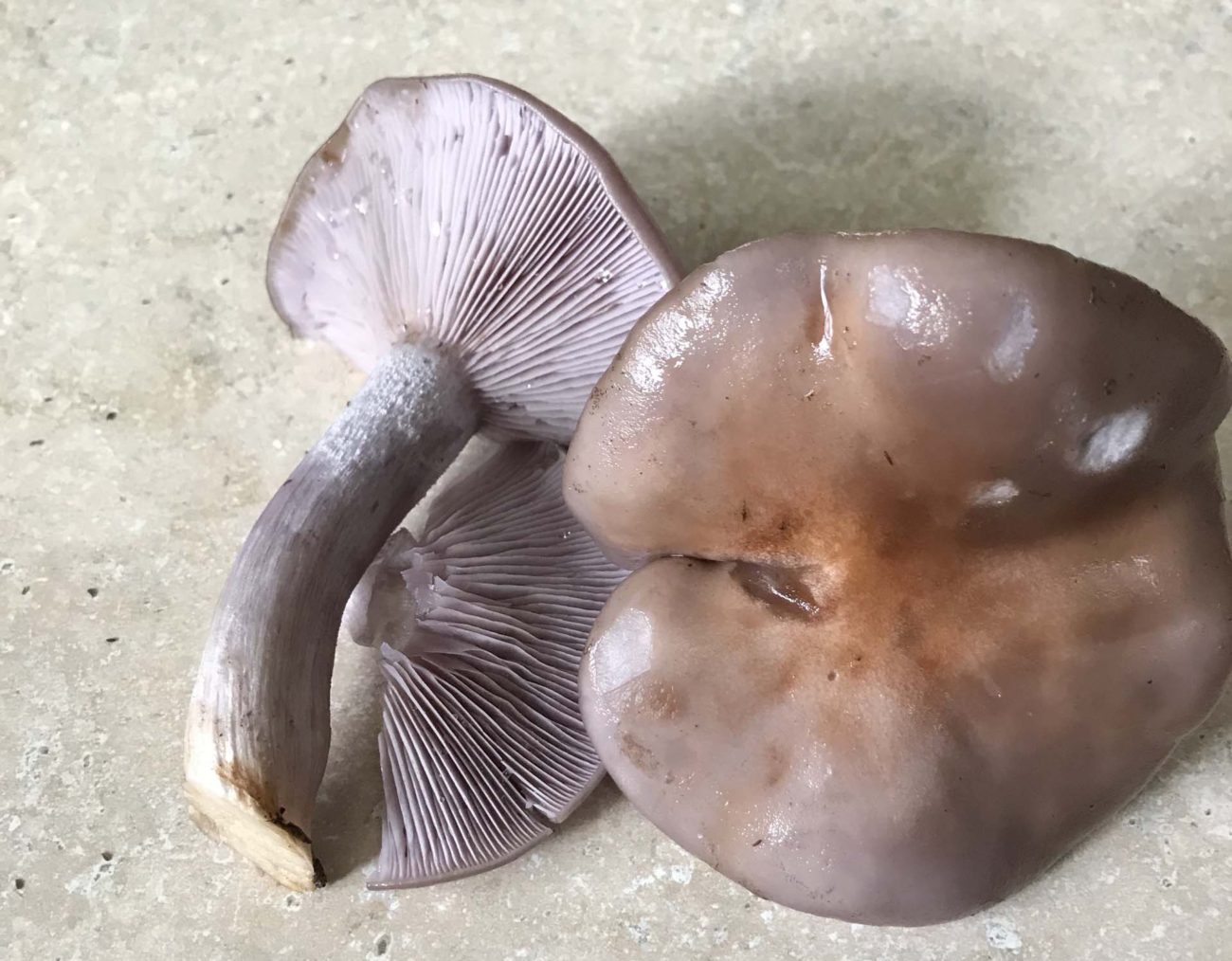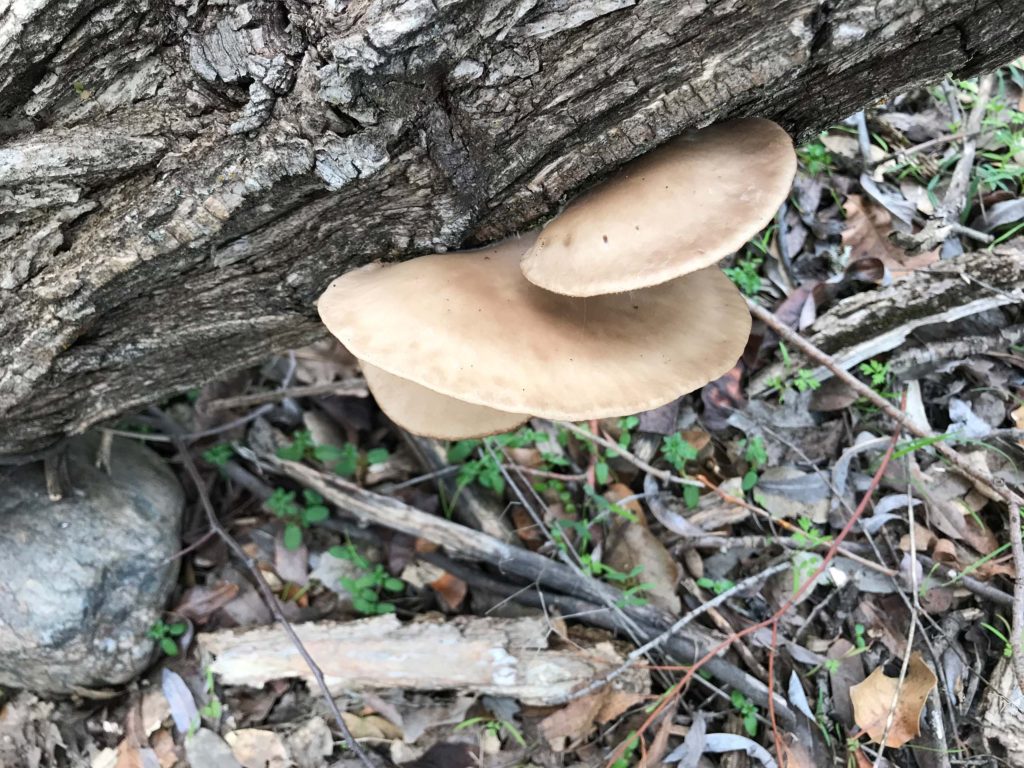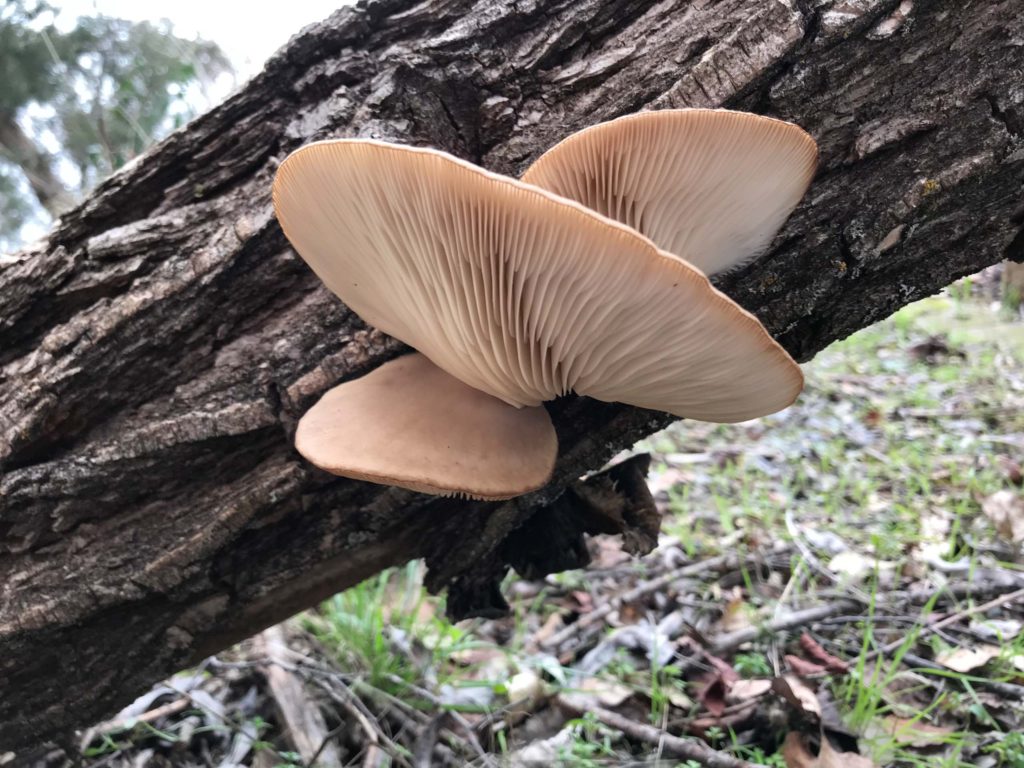
Winter blewit mushrooms (Clitocybe or Lepista nuda)
Fond of growing in the leaf litter under live oak trees, these fragrant, smooth-capped purple or purplish brown mushrooms are a feature of Redding-area winters. The spore deposit (or “print”) is pinkish buff, like old-fashioned face powder. (Other, unsafe-to-eat purple mushrooms have a fibril-covered cap and rusty brown spore deposit.) The flavor is enhanced by butter and a little salt. In the biological world, blewits and other mushrooms contribute to the “cycle of life” by breaking down leaves and conifer needles, returning nutrients to the soil.

Oyster mushrooms (Pleurotus ostreatus group)
These pale mushrooms with semicircular caps, and spores that are white, buff, or pale lilac, are known as oyster mushrooms and can be found growing on hardwoods (in this case in the photos, willow). This is a “species complex” of similar-appearing mushrooms (to the naked eye). Although the flesh can be rather rubbery or a bit tough, they often are harvested for the table. I found these at the end of our most recent rainy spell: the fruiting bodies were taking advantage of the moist conditions in which to produce their airborne spores. This particular group has since disappeared from sight, but I know that their cobwebby mycelium is busily decomposing that willow trunk from the inside.

Remember the rule: “Don’t Eat Nuffin!” (unless verified by an expert). Never eat a wild mushroom raw. Anyone can have an individual allergic reaction to any mushroom.
You can bring your mushroom specimens for identification to the monthly meeting of Shasta Chapter CNPS: 6:45 pm every third Thursday of the month, October through May. Please see our calendar for details. -Susan Libonati-Barnes
